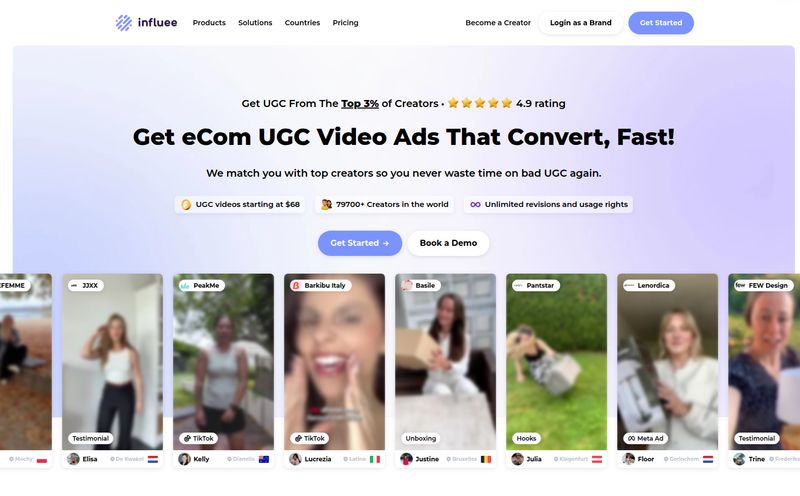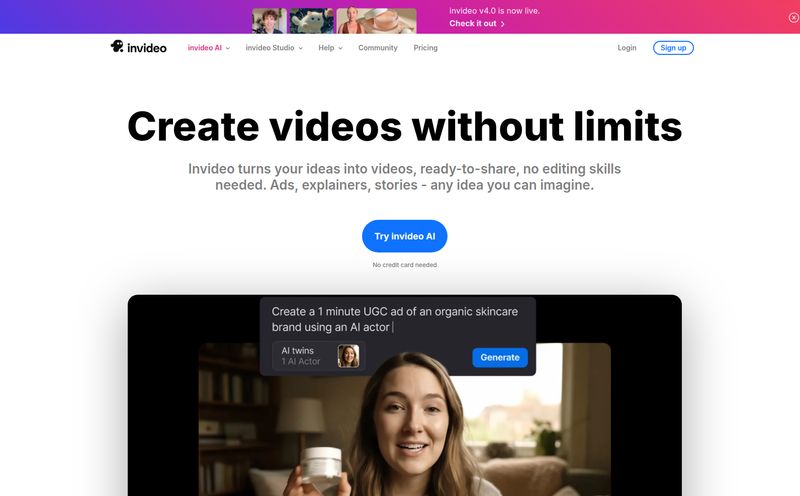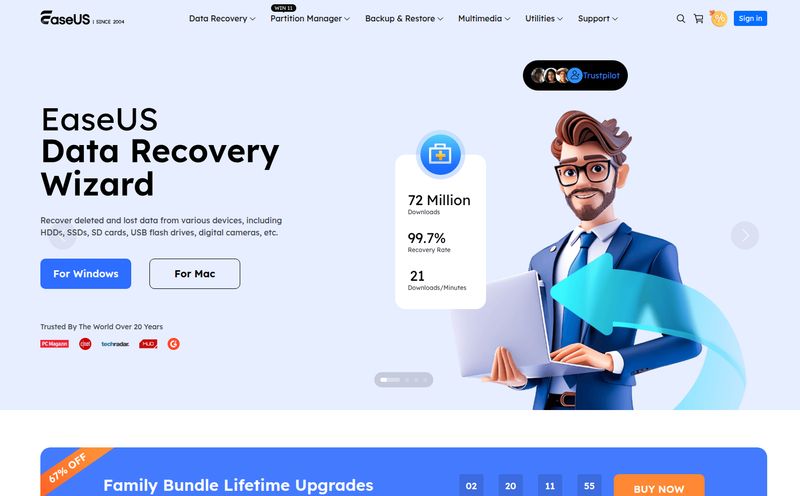I’m always on the hunt for the next great tool. You know the one—it promises to shave hours off a tedious workflow and actually delivers. In the world of content creation, especially video, the biggest time-sink for me has always been post-production. Specifically, finding the golden nuggets in a long recording. Whether it’s a 90-minute podcast or a 45-minute webinar, locating those 30-second clips perfect for TikTok or Instagram is a mind-numbing task of scrubbing, listening, and re-scrubbing.
So, you can imagine my excitement when I heard whispers of a tool called Obiklip. The pitch? A video editor for speech content that lets you edit the video by… editing text. My curiosity was definitely piqued.
Naturally, I did what any of us would do: I popped the name into my browser, ready to be wowed. And I was met with… this.
Welcome to nginx!
Huh. Okay. Not a landing page. A quick refresh, a different URL attempt, and then… a classic 404 Not Found. Not exactly the grand entrance I was expecting. But you know what? It almost made me more interested. Is it a ghost? A tool in stealth mode? Or just a server having a bad day? Whatever the case, I had already found some info, and the concept is too good not to talk about.

Visit Obiklip
So, What's the Big Idea Behind Obiklip?
Let's ignore the website hiccups for a moment and focus on the promise. Obiklip is designed to be a video editor for people who work with words. Think podcasters, YouTubers doing talking-head videos, social media managers, and journalists. Its core function is brilliantly simple: it automatically transcribes your video, turning all the spoken words into a searchable, editable text document.
Imagine this: instead of watching a timeline, you're reading a script. See a sentence you like? You just highlight it. Want to cut out a long, rambling tangent? Just delete the paragraph. It’s like editing a blog post, but the changes are mirrored in the video. This text-based approach isn't brand new—pioneers like Descript have shown how powerful it can be—but a new player focused on simplicity and clipping is always welcome.
The Features That Matter for Creators
From what I've gathered, Obiklip isn't trying to be a full-blown Adobe Premiere replacement. And thank goodness for that. It’s focusing on a very specific, very real pain point. Here’s what stands out.
The Magic of Auto-Transcription
This is the engine of the whole operation. You upload your video, and it spits back a full transcript. Obiklip apparently uses the OpenAI API for this, which is a smart move. OpenAI's transcription is pretty top-tier, handling different accents and technical jargon surprisingly well. It also means the tool can support multiple languages, which is a huge plus for a global creator base. This transcript becomes your map for navigating the content.
Clipping Without the Headache
This is the main event. Once you have your transcript, finding the perfect clip is as easy as using Ctrl+F. You can search for keywords or just scroll through and read. When you find that killer quote or perfect explanation, you highlight the corresponding text, and bam, you've defined your clip. From there, you can export it directly. For anyone who has tried to get frame-perfect start and end points on a traditional timeline, this workflow is a dream. It feels less like technical editing and more like curating content.
Practical Tools for a Real Workflow
Obiklip seems to understand its audience. It supports importing existing .srt files (subtitle files), so if you already have a transcript, you can sync it up. It also allows for bulk exporting, so you can queue up a dozen clips and let it work its magic in the background. Little quality-of-life features like an audio preview and a dark mode show that it's built by people who probably spend a lot of time in front of a screen themselves.
My Honest Take: The Good and The Not-So-Good
No tool is perfect, right? From my perspective as an SEO and content guy, here's how I see the pros and cons shaking out.
| What's Great About It | What Gives Me Pause |
|---|---|
| Dramatically simplifies clipping speech-based video. | Transcription costs are external via OpenAI's API. |
| The navigable transcript is a massive time-saver. | Free users will face limits on creating and previewing. |
| Works on both Windows and macOS. Big win for accessibility. | It doesn't enhance video quality – it’s a cutter, not a finisher. |
| Support for multiple languages and SRT files is very practical. | The current website status (that 404 page) is a bit worrying. |
The biggest thing to flag is the transcription cost. While the tool itself might have a free tier, running transcriptions through OpenAI isn’t free. It’s affordable, for sure, but it’s a separate, variable cost you need to be aware of. Also, it’s important to set expectations: this tool helps you find and extract content. It won't color grade your footage, add fancy graphics, or improve poor audio quality. Its a specialist, not a generalist.
The Million-Dollar Question: What's the Price?
And here we circle back to that 404 error page. As of right now, pricing information for Obiklip is a complete mystery. The website seems to be down or in a state of flux, and with it, any pricing page that might have existed. This could mean a few things:
- It's in a private beta.
- It's undergoing a major revamp before a public launch.
- The project has been paused.
My guess? It's probably a very new tool, maybe even a solo developer project, and they're still working out the kinks. I'm not writing it off because of a server error—I've seen too many great tools have a rocky start. But it does mean we'll have to wait and see on the cost.
FAQs About Obiklip
Since official info is a bit sparse, here are some quick answers based on what we know.
1. What exactly does Obiklip do?
Obiklip is a desktop application (for Windows and Mac) that transcribes your video files, allowing you to edit the video by highlighting and deleting the text, making it super easy to create short clips from long-form content like podcasts and interviews.
2. Is Obiklip free to use?
It appears to have a free tier, but with limitations on certain features. A key thing to remember is that the automatic transcription feature relies on the OpenAI API, which you'll have to pay for separately based on your usage.
3. Can I create subtitles for my videos with Obiklip?
Yes, its support for the .srt file format means you can export your transcript as captions, which is fantastic for accessibility and engagement on social media.
4. Will Obiklip make my videos look better?
No. Obiklip is an editing tool focused on cutting and clipping your content. It does not offer features for color correction, visual effects, or audio enhancement. The exported video quality will be the same as the source file.
5. Does it work on Mac computers?
Yep! It's available for both Windows and macOS, which is great news for creators no matter their preferred system.
Final Thoughts: A Promising Ghost I Hope to See Soon
Despite the initial web search weirdness, the idea behind Obiklip is solid. It targets one of the most tedious parts of modern content repurposing. The potential to turn an hour-long video into ten high-impact social clips, just by reading and highlighting, is incredibly appealing.
It’s a specialized tool for a specialized job, and I love that. I have a feeling that once its web presence stabilizes and the pricing becomes clear, Obiklip could become a go-to utility for a lot of creators. For now, I'm bookmarking it and keeping my eyes peeled. I'm rooting for you, Obiklip. Just, you know, maybe check on your server.
References and Sources
- Information about the Nginx web server, as seen on the error page, can be found at nginx.org.
- Commercial support for Nginx is available at nginx.com.
- For a look at a similar, more established tool in the text-based editing space, check out Descript.



